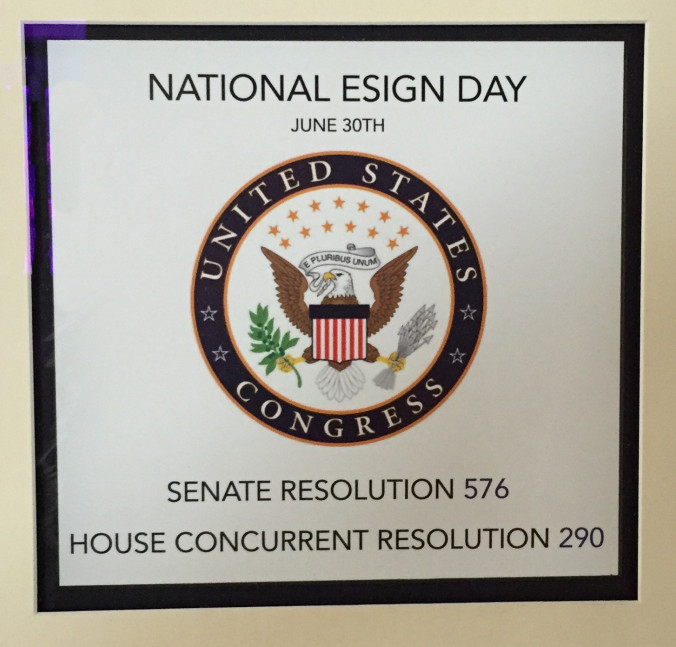You are viewing our site as a Broker, Switch Your View:
Agent | Broker Reset Filters to Default Back to ListFrom the Quill to the Stylus: The History of the Signature in Celebration of National ESIGN Day
June 29 2018
 Electronic signatures gained legal acceptance 17 years ago when then-President Clinton signed the Federal ESIGN Act into law. Ten years later, we celebrated the very first National ESIGN Day on June 30, 2010.
Electronic signatures gained legal acceptance 17 years ago when then-President Clinton signed the Federal ESIGN Act into law. Ten years later, we celebrated the very first National ESIGN Day on June 30, 2010.
We also thought we'd take a look back at the signature itself over the course of millennia — and how the past has shaped the modern day e-signature.
Let's dive in:
3500 BC: The first signature
The Sumerians invented the earliest signature: The seal. Typically, these seals were attached to a small round cylinder about one inch in length and would be pressed into wet clay.
AD 57: Hanko Seal
Japan began to use Hanko as a seal to delegate authority. Hankos are still in use today to denote authorship and ownership. DocuSign has also teamed up with Shachihata, Inc. to develop the eHanko.
1600s: Widespread use
By the 17th century, signatures written on paper became commonplace. By 1677, Parliament of England determined certain contracts must include a signature for them to be legally valid.
1867: Statue of Frauds
In 1867, telegraphed signatures met the legal requirements for written signatures under the Statue of Frauds.
This continued for the telephonic signatures (1918), audio recording (1972) and fax machine (1988).
Which brings us to...
20th century: The Rise of the Fax Machine
We playfully poke fun at the fax machine here at DocuSign, but for several decades it was considered a popular and efficient method of sending documents with legally enforceable signatures. While the fax machine was invented in the mid 19th century, its heydey was most certainly in the 1980s. Of course, by the turn of the century many of us carried no small amount of resentment towards the machine, experiencing the frustrations of never knowing if our faxes went through, receiving illegible faxes on our end, having the fax machine run out of paper or ink on both ends, and towards the end of the fax era, having to hunt down a fax machine. At the dawn of the digital age, the fax machine began to take a beating — figuratively, literally, and perhaps most infamously in Office Space. (We feel your pain Peter, Samir, and Michael. And about those TPS Reports...we sent them via fax!)
2000: ESign Act
In 2000, the Electronic Signatures in Global and National Commerce Act was signed into law by President Clinton and passed by Congress. The law ensures the legally binding power and validity of eSignatures.
2003 – Present: National ESIGN Day, DocuSign, and the Digital Age
2003 brought the rise of the digital signature with the founding of DocuSign. Today, more than 300,000 companies and more than 200 million users in 188 countries complete 64 percent of documents within one hour using DocuSign; 53 percent in 15 minutes or less. Spearheaded by DocuSign and introduced during the 111th Congress, the Senate approved the resolution for making June 30th "National ESIGN Day."
All these historical facts beg the question: What's next for the signature? While only time will tell, we anticipate it will only continue to accelerate as we continue on on the Digital Age — and for many National ESIGN Days to come.
Happy National ESIGN Day!
To view the original article, visit the DocuSign blog.









